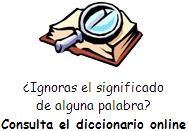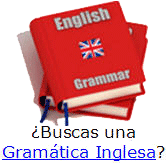There is an
important part of grammar that is common in writing and everyday speech.
But unlike many other subjects in grammar, this subject is defined by
what is not expressed.
What is this mysterious subject?
In today’s report, we will explore elliptical structures.
Let’s start with a few important terms and ideas.
Definition
Clauses are groups of words with a subject and a predicate.
When part of a clause – generally part of the predicate - is left out
but still understood, we get an elliptical clause.
Imagine you are watching an American television show. You hear the
following:
Who is going to cook dinner?
I will.
In this case, the modal “will” appeared without
a main verb. The complete statement is “I will cook dinner.” The words
“cook dinner” are understood between the speakers, although unspoken.
This is a kind of elliptical clause.
Elliptical structures are a wonderful way to avoid repeating words. They
can make your statements more natural or more complex. But they can also
reduce clarity if used incorrectly.
The main problem with elliptical structures is that they depend on an
absent part of a sentence being understood by the listener.
If parts of the sentence do not agree – for example, the subject and
implied verb do not agree - then the sentence can become unclear.
Different kinds of elliptical structures
There are a few different kinds of elliptical structures - noun ellipsis,
verb ellipsis, and verb phrase ellipsis.
In a noun ellipsis, a noun is left out. In a verb ellipsis, a verb is
left out. And in a verb phrase ellipsis, a verb phrase is left out.
You already learned about an example of a verb phrase ellipsis – our
example about cooking dinner. The verb phrase “cook dinner” was not
expressed. All that remained were the words “I will.”
Elliptical structure 1
What about a verb ellipsis, one that does not have a modal such as
“will” or “can”?
One common way a verb ellipsis appears is in sentences with two or more
independent clauses. These clauses are joined by a semicolon.
Consider this example:
Tom took a train; Mary, a cab.
In this example, the verb in the second part of the sentence does not
appear. This sentence replaces two statements:
Tom took a train.
Mary took a cab.
Since the same verb form - “took” - repeats between the two statements,
you can join them with a semicolon and remove “took” from the second
part of the sentence. That is how we arrive at
Tom took a train; Mary, a cab.
This structure could be used in everyday speech or in formal writing.
Question 1
Let’s take some time to work with this idea.
Use the following nouns and verbs to make a sentence that uses an
elliptical structure. You might have to add a few more short words such
as the, a, or an.
John Sally order pizza sandwich
Pause the audio and think of your answer before continuing.
Here is one possible answer:
John ordered a sandwich; Sally, a pizza.
In this sentence, the past tense of the verb “order” does not appear in
the second part of the sentence. This is because it is understood the
same verb form appears in the first part of the sentence. If we were to
pull apart the sentence into two separate statements, it would be the
following:
John ordered a sandwich.
Sally ordered a pizza.
But instead of repeating the same verb, we joined the two statements
into one sentence that has a semicolon and a comma. That is how we
arrive at:
John ordered a sandwich; Sally, a pizza.
Question 2
Now let’s try a different question. Use the following nouns, pronoun,
and verb to make a sentence that uses an elliptical structure. You might
have to add a few more short words such as the, a, or an.
We Bob prefer live music recordings
Pause the audio and think of your answer before continuing.
This question was a trick question. You might think that the answer is
this:
We prefer live music; Bob, recordings.
An elliptical structure might not be the best choice here.
The reason is because the verb “prefer” should be used in two different
ways in the sentence. In the first part, “prefer” agrees with the
subject, We. In the second part, the verb form “prefers” agrees with the
subject, Bob. In other words, if we pulled apart the sentence into two
separate statements, it would be something like this:
We prefer live music.
Bob prefers recordings.
So, we would have to use a different kind of sentence to express the
idea. It could be, for example, “We prefer live music; Bob prefers live
music."
Closing thoughts
The central idea in today's report is that elliptical structures suggest
language but do not directly express it. |
 Sugerencias:
Sugerencias:![]() ). Utiliza el botón derecho del ratón y "guardar enlace" para
descargar el fichero a tu PC, tablet, Smartphone, etc.
). Utiliza el botón derecho del ratón y "guardar enlace" para
descargar el fichero a tu PC, tablet, Smartphone, etc.
![]() Escucha el audio
Escucha el audio
![]() ¿Quieres recibir en tu e-mail gratis y
periódicamente ejercicios, programas gratuitos, explicaciones y otros recursos
para mantener tu inglés sin esfuerzo? Apúntate a nuestro
cuaderno quincenal de inglés.
¿Quieres recibir en tu e-mail gratis y
periódicamente ejercicios, programas gratuitos, explicaciones y otros recursos
para mantener tu inglés sin esfuerzo? Apúntate a nuestro
cuaderno quincenal de inglés.



